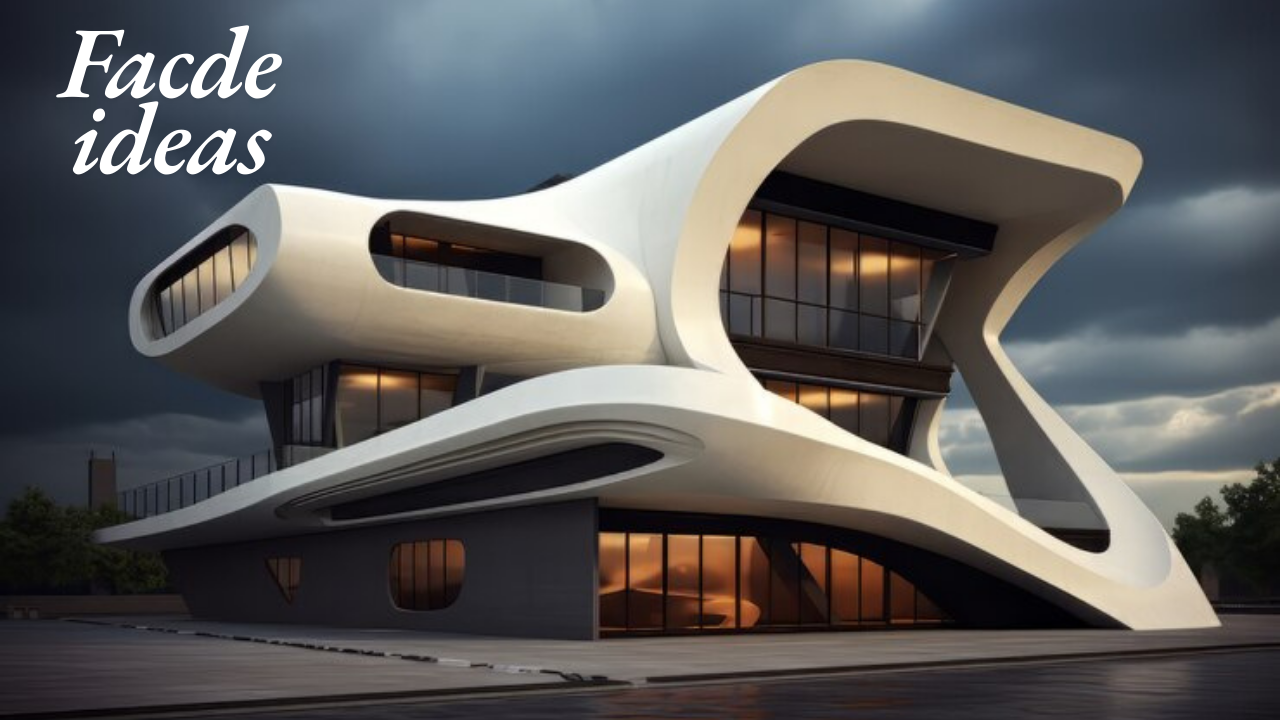A building’s facade is more than just its outer appearance; it serves as the first impression, an identity marker, and a protective layer. Facade design plays a vital role in both aesthetics and functionality. Architects carefully craft facades to efficiency, improve ventilation, and reflect the building’s purpose or personality. Let’s delve into the different aspects of facades, their importance, and how they shape the urban landscape.
What Is a Facade?
A facade is the outermost layer or face of a building. It can consist of materials such as glass, metal, wood, concrete, or stone. While facades are primarily associated with the front view, they can refer to any visible side. The design of a facade balances function and style, offering protection from environmental elements and influencing a building’s overall appearance.
The Importance of Facade Design
Facade design is crucial because it impacts not only how a structure looks but also how it performs.
- Visual Identity: Facades give buildings their character, helping them stand out or blend into their surroundings.
- Energy Efficiency: With the right materials, facades can reduce heat gain or loss, improving energy consumption.
- Natural Ventilation: Some facades are designed to allow air to flow through, reducing the need for artificial cooling.
- Weather Protection: A well-designed facade protects the building from rain, wind, and UV radiation.
- Sustainability: Facades play a role in sustainable architecture, incorporating eco-friendly materials or technologies.
Types of Facades
Modern architecture offers a variety of facade types, each catering to specific needs and architectural styles.
Glass Facade
Glass facades are popular in office buildings, giving them a sleek, contemporary look. They allow natural light to enter while offering views of the outdoors. However, they require high-quality glazing to manage thermal performance.
Curtain Wall Facade
Curtain walls are non-structural facades attached to the building’s frame. These are lightweight systems often made from glass, aluminum, or stone panels, enhancing both aesthetics and insulation.
Cladding Facade
Cladding involves covering the building with materials like wood, metal, or fiber cement boards. This type adds an extra layer of protection and insulation to the structure.
Living Facade (Green Facade)
A green facade is covered with climbing plants or vegetation. It offers environmental benefits by filtering pollutants, reducing heat, and improving air quality around the building.
Perforated Facade
Perforated metal facades create patterns or screens that offer privacy and light control. These facades are often seen in cultural or institutional buildings, blending artistic design with practicality.
Materials Used in Facade Construction
Selecting the right material for a facade is essential for durability, performance, and aesthetics.
- Glass: Provides transparency, daylight, and modern appeal
- Metal: Aluminum and steel panels offer sleek designs and durability
- Wood: Adds warmth and natural beauty to residential and commercial buildings
- Stone: Granite and limestone offer a timeless, classic look
- Concrete: Used for both structure and decorative elements in brutalist architecture
Modern Trends in Facade Design
Innovative facade designs are transforming buildings into works of art. Some of the popular trends in modern facade design include:
- Parametric Facades: These facades use computer algorithms to create dynamic shapes and forms.
- Kinetic Facades: Moving components in kinetic facades respond to weather or light changes, adjusting to optimize performance.
- Solar Facades: Solar panels integrated into facades generate energy, making buildings more sustainable.
- 3D Facades: Adding depth with layers or textured surfaces makes facades visually striking.
How Facades Impact Urban Architecture
Facades influence the visual rhythm of cities. Iconic facades, such as the Louvre Pyramid or Sydney Opera House, become landmarks that define the cityscape. In urban environments, facades also address the need for climate adaptation by incorporating passive cooling systems, green walls, and reflective materials
Challenges in Facade Design
Creating a facade is not without challenges. Architects must balance functionality, aesthetics, and cost. Some of the common issues include:
- Material Selection: Choosing the right materials that are durable, cost-effective, and visually appealing
- Maintenance: Some facades require regular upkeep to maintain their appearance and performance
- Climate Adaptation: Ensuring that the facade performs well under different weather conditions
- Regulatory Compliance: Meeting local building codes and sustainability requirements
The Role of Technology in Facade Design
Technological advances have revolutionized facade design. Today’s architects use 3D modeling, virtual reality, and parametric tools to visualize complex facades. Advanced materials such as self-cleaning glass and reflective coatings further enhance facade performance.
How to Choose the Right Facade for Your Building
When choosing a facade, consider the following factors:
- Climate: Select materials that suit the local weather conditions
- Building Purpose: Different facades suit different functions, such as commercial, residential, or institutional
- Budget: Factor in both installation and maintenance costs
- Sustainability Goals: Opt for materials and designs that reduce the building’s environmental impact
- Aesthetic Appeal: Ensure the facade complements the surrounding architecture
Facades and Sustainability
Sustainable facades help reduce the carbon footprint of buildings. Green facades, solar facades, and facades with natural ventilation systems contribute to energy savings. These eco-friendly designs align with global efforts to promote green building practices and environmental conservation.
Conclusion
Facade design is a vital part of architecture that blends form with function. Whether through modern glass walls, eco-friendly green facades, or traditional stone cladding, facades shape how people perceive and interact with buildings. In an era where sustainability and aesthetics go hand in hand, innovative facade solutions can enhance both the environment and the urban experience. With technology pushing boundaries, the future of facade design holds exciting possibilities that will redefine how cities look and function.
Frequently Asked Questions about Facades
What is the primary purpose of a facade?
A facade serves as the building’s exterior face, providing aesthetics, protection, and energy efficiency.
How do facades improve energy efficiency?
Facades reduce heat gain or loss by using insulating materials, shading devices, and smart glazing techniques.
What are the most common materials used for facades?
Common facade materials include glass, metal, wood, stone, and concrete.
What is a green facade?
A green facade incorporates plants or vegetation on the building’s exterior, improving air quality and reducing heat.
Are glass facades energy-efficient?
Glass facades can be energy-efficient if they use double or triple glazing with low-emissivity coatings to control heat transfer.
How do architects design facades for extreme climates?
For extreme climates, architects use materials with high thermal resistance, natural ventilation systems, and reflective surfaces to enhance performance.














